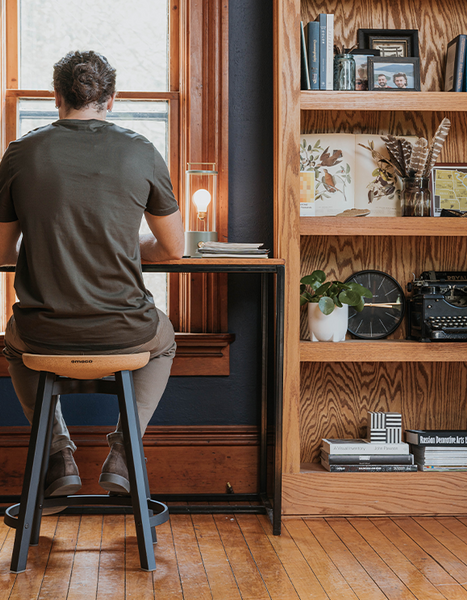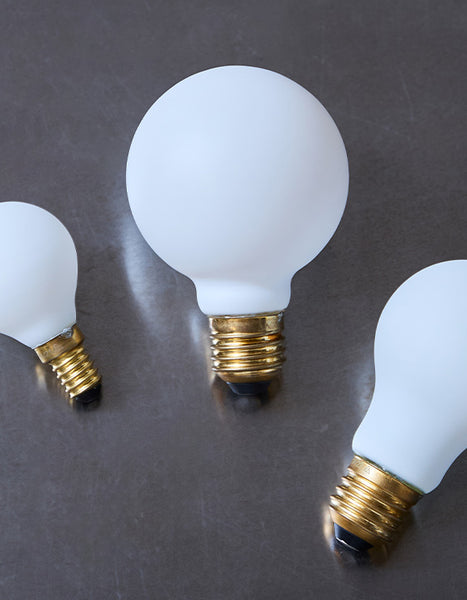At Work With: Laura Aviva, lÕaviva home

NYC design studio l’aviva home creates beautiful homewares that are both raw and refined. They work with artisans around the world to bring their designs to life, resulting in unique pieces that forge deep connections between people and the things that surround us. To celebrate our recent collaboration, we sat down with founder Laura Aviva to learn more about their work.
Prior to launching l’aviva home, you worked as a Creative Director of Travel + Leisure Magazine. How does this globetrotting experience inform your work now?
There’s a definite throughline connecting my time at T+L and what we do here at l’aviva home. I adored working at the magazine—and then after a good many years there, I was really craving the opportunity to do something in 3D. My favorite part of being on the team at T+L was the opportunity it afforded me to meet so many people and to work in so many places around the world. And in thinking about next steps, I wanted to continue to travel with a purpose, not just as a tourist. The basis of l’aviva home originally was much more guided by the idea of relationships and different ways of engaging with the world than it was about making things. And, in many respects, that remains true today, 10 years later: while we’re definitely design-obsessed, we’re driven by sense of connection.

Where in the world were you when the first seed of inspiration came to you to launch the business?
The idea for l’aviva home didn’t come about all at once—and we’ve gone through various iterations over time. I would say, though, that the start of us really taking deep dives into product development and process as it evolves through cultural exchange came about via a trip I took to Kyrgyzstan in 2010. I went on a quest to better understand shyrdak (the felt rugs traditionally made to line the floors and walls of yurts), and came away with a full on obsession for the people and the storytelling and the historical context behind the art—and a dedication to working through the many obstacles to create something together.
What kind of experience are you looking to create in your clients’ homes through your collections?
I think that there’s an ever-growing yearning for designs that tell stories — and, in very much the same way, there’s a craving for authenticity. With the handmade, you have to be true to the materials that you are working with, with both design and technique being informed by the materials themselves — it’s authentic by nature. I’ll always say that first and foremost, we want our clients to have something beautiful, in its own right. And then beyond that, the ideal is that the pieces leave them feeling connected to the world in a meaningful way.
What do you look for in the artisans and workshops you choose for each of your collaborations?
We are very focused on building strong partnerships with the artisans we work with. They bring their deep knowledge and mastery, and we bring a fresh perspective and a new way to frame their work. Everything we do is guided by process, which is different every time—a collection evolves according to the relationships we form and the experiences we have. We’ll often be drawn to a country or a region or a particular workshop starting with a long-standing tradition or a technique or a material—but ultimately we’re guided by the ‘who’—who we are drawn to, who we vibe with, who we want to be Whatsapp-ing with about little details 24-7…

What inspired the new Piedra collection, and what does Tala bring to the collaboration?
The inspiration for the Piedra Collection came at us from a few different directions.
Allyson Keenan, our design director, and I share a stone mask obsession. And we had recently come across the images and the story behind the stone masks from the Aztec civilization of Teotihuacán. There were a very limited number of these masks unearthed—but they all share very specific, geometrically-rendered features that appeal to us aesthetically. The fact that the masks were also characterized by having holes in the ears indicates that they were meant to be hung—which seemed to provide the perfect point of departure for designing wall-hung lighting.

We’d also been wanting, for some time, to find the right fit for a project working in stone. When we learned that it is believed that the stone for the masks of Teotihuacán was quarried from the same place as that being mined today by the artisans in the town in Puebla that we have been wanting to work with, it all gelled.
And the idea of working with Tala on this collection was part of the mix from the very start. We knew that we wanted the overall design sensibility of these lights to mirror the streamlined silhouettes of the masks—and that the bulb, being wholly exposed, needed to be a design element in and of itself. The porcelain effect of the bulbs complements the characteristics of the stone, and the matte finish deflects the light in such a way that it plays differently off the translucency of some of the stones, and the opacity of others.
That, and also just the fact that the light quality of the Tala bulbs is so wholly pleasing—worlds away from other LEDs. More and more of our clients are requesting LED options with our lighting (with more and more building codes requiring them), and Tala bulbs provide a great way for us to be responsive on that count.
What is ‘home’ for you?
Home is anyplace I can cook a big meal with friends.



